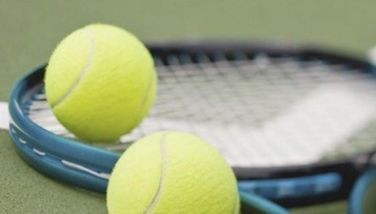The PSC and its relations with sports stakeholders
We received a number of reactions to the last two columns on why government gets involved in sports and to last week’s piece on lessons we can learn from Kenya’s success in Olympic marathon. The discussion on the Kenyan experience should be very instructive for the Philippines which has yet to win an Olympic gold medal in a regular sport in the quadrennial event.
We go back to Arthur T. Johnson and James Frey, editors of the book, “Government and Sport” to help us get insights on the rationale for government involvement/intervention in sports.
As both writers say, today, given the great increase in the monetary reward of sport, all stakeholders – players, entrepreneurs, media, private sector sponsors of team, athletes and events, and even the state itself – seek their “fair share” of the fruits of sport and tend to oppose the favored treatment of one set of interests over another. Thus, although government is less likely to enter into the explicit preferential agreements of a time past, it does become a key arbiter in distributing the material rewards of sport.
In the Philippines (and other countries), there is no more glaring example of government involvement in such distribution of rewards when, the state, grants incentives to coaches, athletes, etc. for medals won in international athletic events: the bigger the event, the bigger the reward. And the proportionate reward system can only be explained by the fact that sport has become one of the instruments at the disposal of government to forge national unity, to conduct hard-nosed diplomacy and to improve its image in the international community. All sane governments are concerned about international regard and respect.
Johnson and Frey also assert that sport has acquired the status of a public trust. As a result, public policy in the form of law or regulatory action has been implemented to guarantee the equitable access to sport by the public and to make sport more egalitarian. The fact that the law creating the Philippine Sports Commission (PSC), Republic Act 6847, mandates the PSC to carry out “the policy of the State to promote physical education, encourage and sustain development of sports ...through a unified national sports promotion and development program, and that the establishment and creation of a single, unified and integrated sports policy-making body shall further this objective,” does indicate where the leadership of PSC is coming from in terms of its relationship with other stakeholders.
Among these stakeholders, and not just the only stakeholder, are the National Sports Associations (NSAs) whose autonomy and exclusive technical control over the promotion and development of the particular sport for which they are organized is, under the same law, recognized by the PSC. The same law however states that such autonomy is subject to the supervisory and visitorial powers of the Commission. These supervisory and visitorial powers of the PSC are mentioned twice, Sections 11 and 13, in RA 6847.
These powers are given added emphasis when the enabling law states that among PSC’s powers are “to confer, extend and grant support or assistance to sports associations which are in good standing with the Commission” and to impose sanctions upon any national sports association, institution, association, body, entity, team, athletes and sports official for violation of its (PSCs) policies, rules and regulations.” At the same time however RA 6847 states that NSAs have the “function, power, duty, and responsibility of, among other things, selecting the athletes, coaches and other officials for their national teams.”
What these sections simply mean is that the autonomous character of the Olympic movement and the sports associations is recognized and respected by government. Sports stakeholders must however realize that government needs utmost flexibility to fulfill its mandate and that accountability for public resources will not allow government to abdicate its supervisory and visitorial powers.
Both government and private sector must understand these dynamics and approach their roles with the idea that while both are travelling on, so to speak, separate tracks (as in parallel railroad tracks), both are headed for the same direction. The dynamics between government and sports stakeholders require that both relate to each other in a lateral and not hierarchical manner.
Given the way the law is phrased and the inherent nature of government (as supervisor) and the Olympic movement (whose autonomy is zealously guarded), there is a great need for goodwill, patience and most of all, a real desire to help one another. The character and personalities of the players will also dictate how this relationship will be played out, although ideally, one of the marks of a realistic and viable structure is that it should work regardless of personalities.
Next week, how Kenyans achieve success in the marathon race.
- Latest
- Trending




























